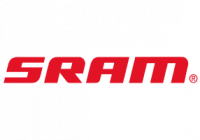Does Swiss Ball Training Make You Faster?
Tri-Hard’s Scientific Study of the Month
September 2012
Citation: The Effect of Short Term Swiss Ball Training on Core Stability and Running
Economy. Journal of Strength and Conditioning Research, 2004, 18(3), 522-528.
Insight from the Study:
In this study, participants in the experimental group did two Swiss-ball workouts
(workouts consisting of exercises done using a Swiss ball) a week for six weeks.
Participants in the control group did not do these workouts. All participants were
assessed for running VO2 max, running economy, and running posture before
and after the six weeks. The participants in the experimental group showed no
improvement in any of the running measures.
Take-Home Message:
Despite the common belief that “core exercises” like those performed on a Swiss
ball improve running ability (and swimming and cycling ability), the participants in
this study showed no improvement in running VO2 max, running economy, and
running posture after six weeks of Swiss-ball training.
That’s interesting, right? Why could this be? Repeat after us: specificity,
specificity, specificity! What do exercises done on a Swiss ball make you good
at? Exercises on a Swiss ball. The results of this study show this clearly. The
participants who did Swiss-ball workouts did not see any improvement in their
running ability!
So how can you improve your running ability? The first very clear answer is:
Run! You may be wondering, “But don’t I use my ‘core’ when I run? And if so,
shouldn’t I ‘train my core’?” We’ll answer your question with a question: If you
use your core while running, doesn’t running ‘train your core’? Really think about
this. A biomechanist (and many other sports and fitness professionals) can
explain how the various muscles of your legs, hips, and torso work together when
you run. And they’re all right. We agree completely. You do use your “core”
when you run. It’s true that all of these muscles including those that are part of
what people call the “core” contract or fire when you run. If this is true, and we’d
probably all agree it’s true, then doesn’t running train these muscles? Think
about it. Really think about it. So running is the best way to get good at running.
The best way to train the muscles (and all of the other systems of your body) to
run well is to run. Of course, you should do various kinds of runs and blend them
together well throughout a training year to experience the best gains in your
running.
Training in the gym (we like to call it power training; you may call it strength
training or resistance training) can definitely be beneficial for triathletes. You
don’t have to convince us of that. We’re strong proponents of power training for
triathletes and all athletes and we’ve been National Strength and Conditioning
Association Certified Strength and Conditioning Specialists for many years.
We’ve presented at international coaching conferences on the topic of power
training for triathletes and other endurance athletes. Work in the gym can be
super valuable if it’s done well.
So let’s get back to the Swiss balls. Exercises on Swiss balls (and similar
exercises with or without similar equipment) don’t improve running ability (or
swimming and cycling ability) for two reasons. First, because of the instability
created by the Swiss ball, you cannot generate a lot of force. All of the instability
that is created by the Swiss ball, makes it so that you cannot really exert much
force at all. So your muscles are contracting, but they’re not contracting very
forcefully. You need to exert force to get more powerful. Second, exercises
done on a Swiss ball put you in non-specific positions and/or create artificial
support for your body. You sit on the ball, you lay on the ball, or you put your
arms or legs on the ball. You can’t stand on the ball, right? How do humans
primarily move? While standing. To engage your muscles in the ways you use
them when you move, for the most part, you should be standing. So great power
exercises to do in the gym are exercises like squats, deadlifts, lunges, step-ups,
presses, pull-ups, other standing pushing and pulling exercises, and similar
exercises. When you do these exercises, all of the muscles in your body
(including those in your “core”) work together in an integrated fashion (like they
do in normal movement and in swimming, cycling, and running). And you can
apply significant amounts of force which is a prerequisite for gains in power that
you can use in life and in sports.
You may be wondering, “But I don’t ‘feel it’ in my ‘core’ when I do lunges?” We’ll
ask back: Do you “feel it” in your “core” when you run? When you are doing a
challenging run, you don’t typically have burning “core muscles”, right? You don’t
typically have sore “core muscles” in the following days, right? These muscles
are engaged and doing their job when you run. They also engaged and doing
their job with you do exercises like the ones we mentioned above. Remember
specificity. Your muscles work together in an integrated fashion when you run.
Your muscles work together in an integrated fashion when you do exercises like
deadlifts, step-ups, standing pushing and pulling exercises and similar exercises.
In all of those, you don’t “feel it” in your “core” as strong burning or soreness.
Specificity.
There’s an important caveat. In a rehabilitation setting working with a physical
therapist or medical professional, exercises that isolate a muscle or group of
muscles can be necessary and very helpful. In the best rehabilitation of injuries,
when these isolated exercises are used, they are eventually replaced by
increasingly integrated exercises like the ones we’ve mentioned to prepare you
for dynamic movement like the movement of daily life and swimming, cycling,
and running.
-Jason and Will
Notes from a bike fitting perspective:
I can completely understand why performance was not directly enhanced due to Swiss ball training and the study clearly shows that there is not a direct relationship. However, if you are experiencing comfort issues on the bike, lower back issues, for example, having balanced core muscles may be part of the long-term solution and Swiss ball use may help. Will the Swiss ball make you faster on its own? As the study shows, no. Can it be part of a rehab/training program that helps you ride in greater comfort and thus potentially help you ride in a more aggressive and faster position? A stable and strong core can help with comfort. So, if you are being limited due to pain caused by muscle imbalances core work can help you ride faster by being a part of what helps you ride with better posture comfortably. If you are able to hold your aero position longer because your back is not bothering, that will make you faster. As Jason and Will pointed out, rehab is different from absolute power development – specificity…. -Ian









